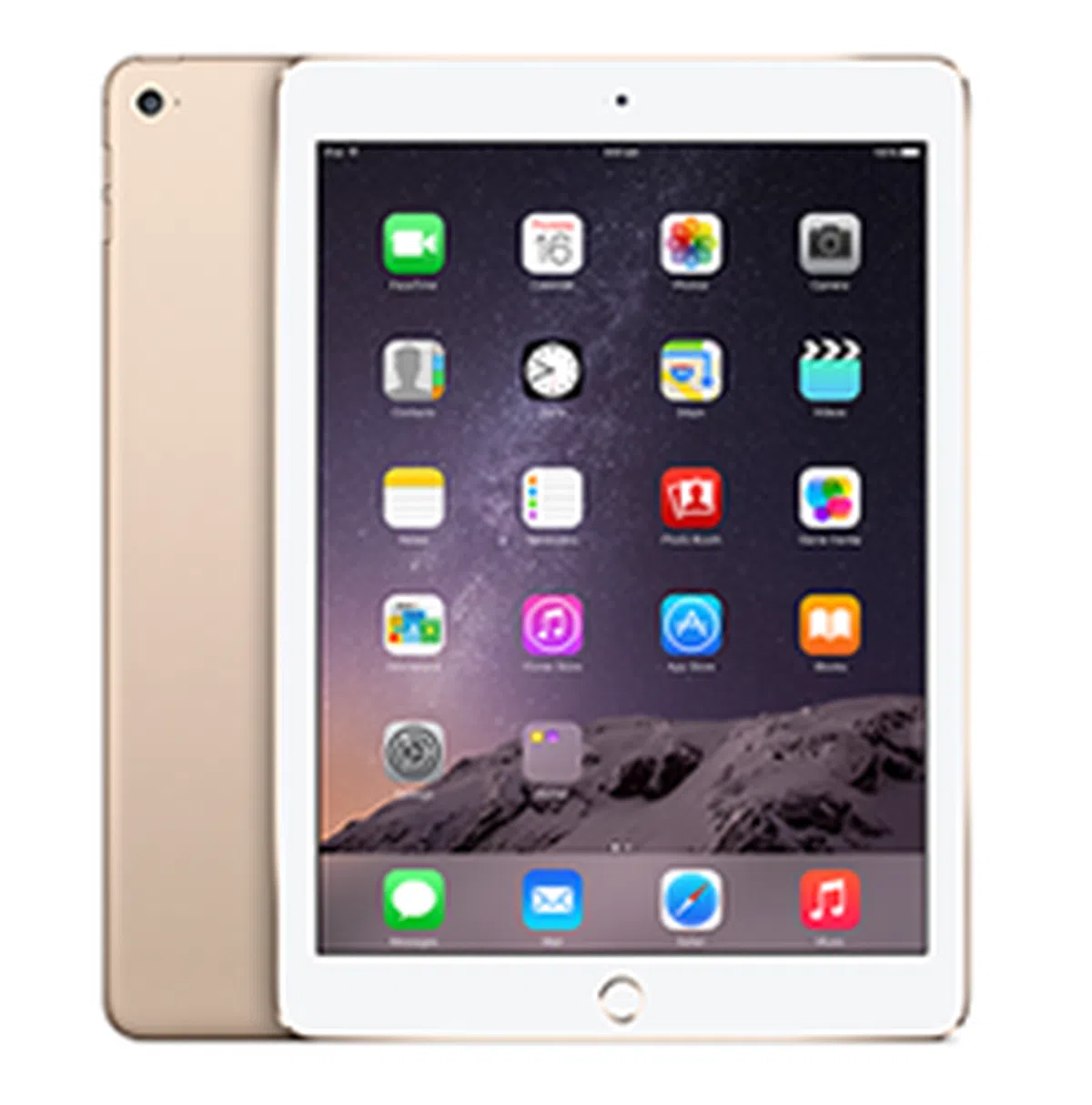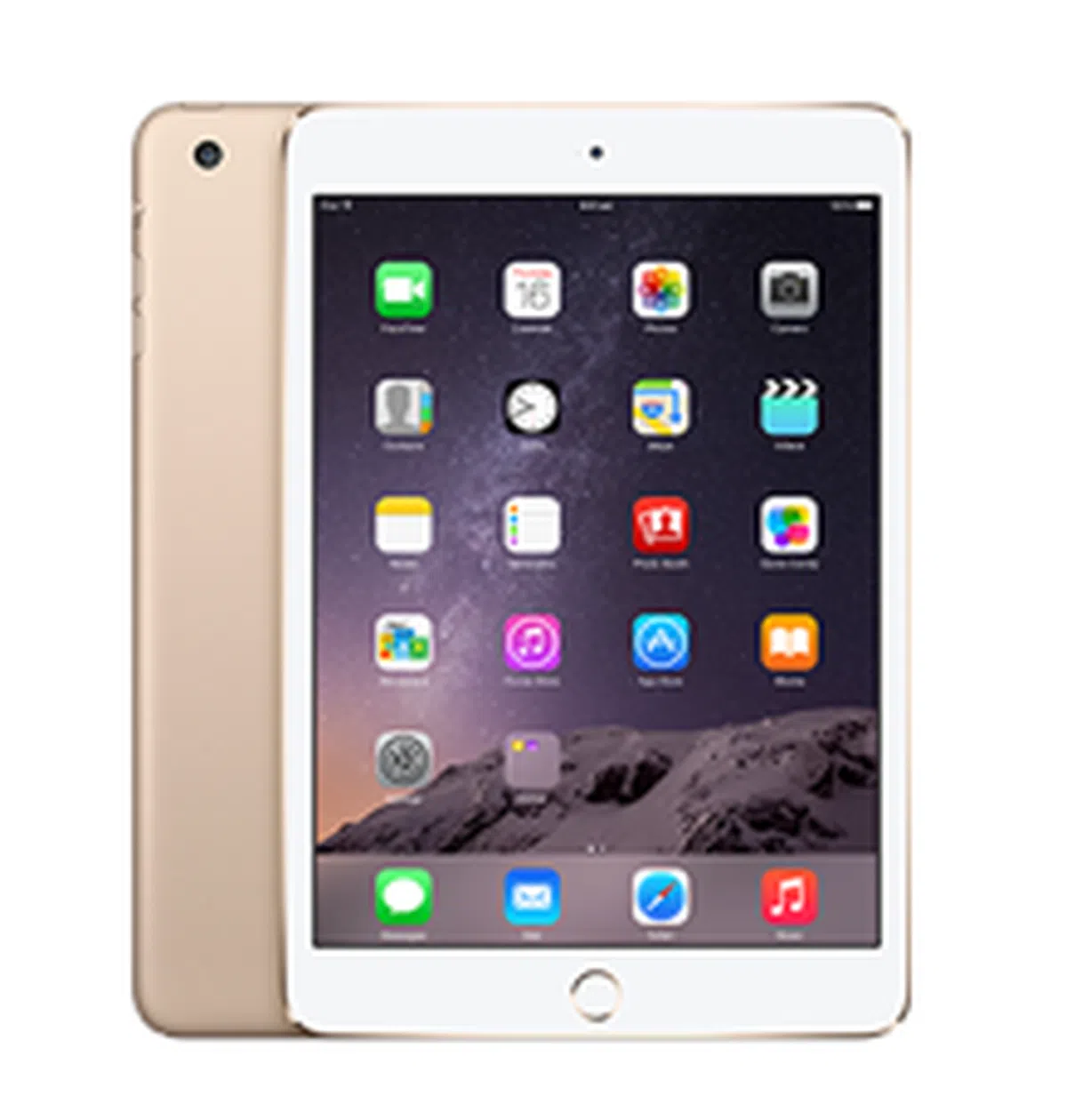Apple iPad Air 2 & iPad Mini 3: Evolutionary, not revolutionary
As sure as the sun rises, Apple releases new iPad tablets ever year. The iPad Air 2 receives a good amount of updates, but the the iPad Mini 3 is a bit strange with minimal advances. In any case, we put them to the test, so find out if they are any good in our review.
By Kenny Yeo -
Times are a changin'
Tablets have been around for a long time, but the modern tablet as we know it with its touchscreen interface and all is a fairly recent invention and it would not be a stretch to say that Apple was single-handedly responsible for making the tablets what they are today.
The first iPad tablet was released in 2010 and it was an instant hit. It sold three million units in 80 days and by the time the iPad 2 was launch a year later, it was estimated to have been in the hands of over 15 million customers. The subsequent models that followed all sold extremely well too and it is estimated that Apple has sold over 200 million iPads since its release in 2010.

The latest tablets from Apple - the iPad Air 2 and iPad Mini 3.
However, things started changing since the beginning of this year. For the first time ever, Apple reported that sales of its tablets dipped. And according to its latest earnings report for Q4 2014, sales of iPads were down once again, making it the third quarter in a row that sales of iPads dipped. In Q4 2014, Apple sold 12.3 million iPads, down from 14.1 million from the same quarter a year ago. And last quarter, Apple sold 13.3 million iPads.
Despite this worrying trend, Apple’s CEO Tim Cook remains optimistic and has said many times that this is just a “speed bump”. Additionally, he believes the market for tablets is still in its infancy and also said that “significant innovation could be brought to the iPad” to reinvigorate sales and this category of products.
On October 17, Apple announced its newest iPad tablets, the iPad Air 2 and iPad Mini 3. The iPad Air 2 is Apple’s sixth generation 10-inch tablet, whereas the iPad Mini 3 is its third generation 8-inch tablet. Let’s see what’s new about these tablets. But first, a quick overview of the specifications of this two new tablets.
The iPad Air 2

On the left is the iPad Air 2, which is 18% thinner than the iPad Air, which is on the right. Note that the iPad Air 2 still has chamfered edges.
We begin with the iPad Air 2, which has been quite extensively upgraded. Let’s begin with the internals. The iPad Air 2 is powered by Apple’s new A8X processor and comes with an M8 motion co-processor that collects and processes data from integrated accelerometers, gyroscopes and sensors.
This is a significantly beefed up version of the same processor that is powered the current iPhone 6 and iPhone 6 Plus. Like the A8, the A8X is manufactured using a 20nm manufacturing process. However, it boasts 3 billion transistors thanks to its additional third core - that’s a billion more transistors than the A8. It also sports higher clock speeds than the A8 - 1.5GHz in the A8X versus 1.4GHz in A8. That aside the A8X also has a wider memory bus and greater memory bandwidth - 128-bit versus 64-bit and 25.6GB/s versus 12.8GB/s. Finally, the A8X has double the L2 cache of the A8 - 2MB versus 1MB.
Also, Apple has finally increased the system memory of the iPad and the new iPad Air 2 now has 2GB of RAM as compared to its predecessors which only had a single GB of memory. Hopefully this means less reloading of tabs when web browsing. And on the topic of web browsing, the iPad Air 2 will also be the first iPad to offer support for Wireless-AC - up to 866Mbps with support for two spatial streams.
The upshot of all of the improvements is that the new A8X is a considerably more powerful processor than the old A7 processor. Apple claims that the A8X’s CPU performance is around 40% faster, whereas its GPU is a whopping 2.5 times more powerful. We will certainly be putting these claims to the test.

The iPad Air 2's speakers are still found only on the bottom of the display, flanking the Lightning connector.

One way to identify the iPad Air 2 from the predecessor is the lack of the mute/lock switch, which was useful for locking the orientation of the screen or simply just muting the device. Users now have to swipe up from the bottom of the screen to bring up iOS' Control Center.
And despite being significantly more powerful, Apple has somehow managed to make the new iPad Air 2 even more compact. For one, it is 18% thinner than its predecessor, measuring just 6.1mm thick. For comparison, the old iPad Air is 7.5mm and the new iPhone 6 is 6.9mm thick. The iPad Air 2 also weighs about 30g less. The difference in thickness is definitely noticeable if you handle both tablets side by side, though the difference in weight is less obvious. In terms of design, the iPad Air 2 is identical to the iPad Air, retaining the same aluminum chassis with polished chamfered edges. However, the iPad Air 2 also gets a new Gold finishing, on top of the existing Space Grey and Silver color options.
The iPad Air 2's slimmer dimensions is achieved because of its fully laminated display. On previous iPads, the display is actually made up of three separate components - the cover glass, touch sensor and the LCD - but the iPad Air 2 combines all three components into a single one. This eliminates the gaps and makes the display thinner. Additionally, the iPad Air 2 is also the first iPad to get an anti-reflective coating, which Apple says reduces glare by 56%. In our experience, the anti-reflective coating does work in reducing the intensity of glare and reflections, though we cannot say for sure if it is by 56% as Apple has claimed.
The 10-inch display still outputs a resolution of 2048 x 1536 pixels - 3.1 million pixels in total - which gives it a pixel density of 264.58 pixels per inch, which trails behind some Android flagship tablets such as the Samsung Nexus 10 and ASUS Transformer Pad TF701T, but in the real world, you would be hard pressed to notice the difference.

The rear-facing camera now shoots at 8 megapixels, but there is still no flash.

No need for passwords, just your fingerprint will do.
That’s not all, the new iPad Air 2 also gets upgraded cameras, both front and back. The rear-facing camera now shoots at 8 megapixels (it was 5 megapixels previously) and features a 10fps burst mode and 120fps slow motion video. And on the other hand, the front-facing FaceTime HD camera now has a larger ƒ/2.2 aperture, which allows in more light, but still shoots at 1.2 megapixels.
Finally, the iPad Air 2 also gets Apple’s Touch ID technology, which uses your fingerprint to make unlocking the device safe and secure. The Touch ID sensor was first seen on the iPhone 5S and we are happy that it has finally made its way to the iPad. Touch ID makes unlocking the iPad Air 2 a breeze and along with iOS 8, allows for more uses such as Apple Pay.
The iPad Mini 3

Like the iPad Air 2, the iPad Mini 3 has a new Gold finish, which matches the iPhone 6 and iPhone 6 Plus.
The new iPad Mini 3 is a curious and somewhat disappointing device. While the iPad Air 2 received numerous improvements, the iPad Mini 3 seems entirely neglected in comparison. In fact, the iPad Mini 3 is almost entirely similar to the iPad Mini 2, apart from its new Touch ID sensor and Gold finish - the better to match your gold iPhones right? It has the same processor, display, camera and even design. In a nutshell, it is no more powerful nor is it slimmer or lighter.

The only thing new about the iPad Mini 3 (apart from the new Gold finish) - the Touch ID sensor.
For those who are not familiar with the iPad Mini 2, it is powered by the A7 processor with an M7 co-processor and is complemented by 1GB of RAM. Its 7.9-inch display outputs a resolution of 2048 x 1536 pixels (the same as the iPad Air 2), which gives it a pixel density count of an impressive 324.05 pixels per inch. For more details, we suggest reading our iPad Mini 2 review, because the new iPad Mini 3 is really the iPad Mini 2 with a Touch ID sensor.
Performance benchmarking
As detailed earlier in our review, the iPad Air 2 features a markedly more powerful processor than the iPad Air and it will be interesting to see what kind of numbers it will serve up in our benchmarking tests. We will be testing the iPad Air 2 using our usual benchmarks of Sunspider Javascript and 3DMark.
For comparison, we will be including results of the iPad Air, the iPad Mini 2 and also flagship Android tablets like the Samsung Galaxy Tab S (10.5) and ASUS Transformer Pad TF701T.
Here’s a quick overview of how the new iPad Air 2 and iPad Mini 3 measures up against its competitors.
SunSpider Javascript results
SunSpider Javascript measures the browsing performance of a device. It not only takes into consideration the underlying hardware performance, but also assesses how optimized a particular platform is at delivering a high-speed web browsing experience.
Apple’s iPads have traditionally been strong performers on this benchmark and we were expecting the new iPad Air 2 to blow away the competition, which it did. Its timing of just 286ms is the lowest we have ever recorded and was exactly what we had expected from its new A8X processor. The new iPad Mini 3 was underwhelming as it was slower than the iPad Mini 2 - perhaps because of the additional background resources required for its new Touch ID sensor.

3DMark results
Originally developed as a PC benchmarking tool, 3DMark is now expanded to support multiple platforms, including iOS. Its Ice Storm benchmark is based off the OpenGL ES 2.0 API and is designed for smartphones, mobile devices and ARM architecture compute devices. It includes two graphics tests designed to stress the GPU performance of your device and a physics test to stress its CPU performance. 3DMark now consists of three test sections: Ice Storm, Ice Storm Extreme and Ice Storm Unlimited. Most recent flagship devices easily maxed out the score on Ice Storm and Ice Storm Extreme; as such, we will focus on Ice Storm Unlimited.
3DMark Ice Storm Unlimited uses off-screen rendering resolution at 1080p, higher quality textures and post-processing effects to create a more demanding load for the latest smartphones and tablets. It also disables vertical sync, display resolution scaling and other operating system factors that can affect the result, thus making it ideal for chip-to-chip comparisons of different chipsets.
Again, the iPad Air 2 blew away the competition by recording a score of 21665 points. Compared to the iPad Air, this is over 45% greater. Also, nothing from the Android camp came close to challenging it. And predictably, the iPad Mini 3 managed the same score as the iPad Mini 2.

Real world usage experience
Apple’s iPads are renowned for its speed and fluidity and the new iPad Air 2 and iPad Mini 3 follows in this tradition. The iPad Air 2 is especially speedy and fast, and it seems to bristle with unlimited computing power. Even with many apps opened in the background and playing graphics intensive games such as Asphalt 8: Airborne, it showed no signs of slowing down. The additional RAM also comes in handy especially for web browsing, allowing you to have more tabs opened at once without the need of reloading - previous iPads had to constantly reload the page when you browse from tab to tab. Simply put, the new A8X processor is a beast.
The iPad Mini 3 uses last year’s A7 processor and though it is no slouch, it does feel a tad less responsive than the iPad Air 2. However, we are really nitpicking, because in general usage scenarios, it still works briskly and quickly. And our experience is backed up by its benchmark results, in terms of performance, the iPad Mini 3 remains to be one of the leading tablets around in its form factor.
Imaging Performance

The new iPad Air 2 takes good photos, but it is still trounced by the new iPhone 6 and iPhone 6 Plus. Why can't Apple just use the cameras on their phones in their tablets? Click this image to see the original unsized photo.
The iPad Air 2 has improved front and rear cameras. The rear camera now shoots at 8 megapixels and includes a 10fps burst mode and 120fps slow motion video, while the front camera now has a larger ƒ/2.2 aperture.
Looking at the image above and comparing them with the iPhone 6, its clear that the phones have the advantage in imaging performance. Compared to the new iPhones, the iPad Air 2's photos exhibit more noise and are not as sharp; but on the flip side, color reproduction is natural and the camera was quick to focus. In all, we must say that the iPad Air 2's camera has been improved appreciably. Nevertheless, we still think its silly to be taking photos using your tablet.
The iPad Mini 3 has the same cameras as last year’s iPad Mini 2, which in turn has the same camera as the iPad 4. So for the iPad Mini 3’s camera performance review, check out our iPad 4 review here.
Battery Performance
Our standard battery test for mobile phones includes the following parameters:
- Looping a 720p video with screen brightness and volume at 100%
- Wi-Fi and Bluetooth connectivity turned on
- Constant data streaming through email and Twitter
The new iPad Air 2 has a smaller battery compared to the iPad Air and this has affected battery life quite drastically. In our tests, we found that the newer iPad Air 2 lasted over 80 minutes shorter - that's more an hour. As such, its recorded battery lifespan is the shortest amongst comparable tablets. And just as we had expected, the new iPad Mini 3 lasted just about as long as last year's iPad Mini 2.
And if we look at the power consumption charts, the iPad Air 2 is clearly one of the more power hungry tablets. We had expected the new A8X processor to consume more power than the older A7 processor, but it may surprise you to find that it actually consumes around 4% more power - but it offers loads more in terms of performance, so the tradeoff is reasonable, we think. Hence, if anything, the smaller battery in the iPad Air 2 is to be blamed for its slightly lackluster battery life.


To put the earlier battery life and power consumption figures into perspective, let's look at our portability index, which compares battery life to the device' volume and weight. Apple's iPad Mini tablets are the highest score bunch here, but that is because they only have 8-inch displays, while the rest of the tablets have 10-inch displays. And again, the new iPad Air 2 is letdown by its short battery life as it is outscored by rivals from Sony and Samsung. So while general performance is definitely one of the iPad's strong suits, we cannot say the same for battery life and portability.

Still the best tablets around

Apple had the first to market advantage and they are not giving up. For tablets, the iOS ecosystem is unrivaled and the new iPads (the Air 2, at least) are better than ever.
If you are hunting for a tablet, Apple’s iPads are still the best around. The sheer amount of apps optimized for the iPads is unmatched and is Apple’s biggest asset against the competition. Furthermore, Microsoft also just recently announced that it will be making Office free for iOS devices and this will surely only boost the productivity capabilities of the iPad. And to add, there is also no shortage of accessories for Apple’s tablets, including some nifty ones like the Brydge+ iPad keyboard.
The two new iPads from Apple follow last year’s releases in that they are evolutionary rather than revolutionary. It seems that we have reached a point of diminishing returns for tablets and it is hard to see any kind of exciting innovation for these types of products at this stage. Already, they are supremely thin, their displays are mostly fantastic and they have adequately long battery lives.
Let’s get the iPad Mini 3 out of the way because it is a bit of a letdown mainly because it is basically the same model as last year’s but with a Touch ID sensor and a new Gold finish - the processor, display, camera and battery are all unchanged. As for pricing, the price for the base 16GB models - both WiFi-only and Wi-Fi + Cellular - are also unchanged. However and fortunately, prices for the 64GB and 128GB models have been reduced quite substantially - the 32GB model has been removed from the line-up. If you are considering the iPad Mini 3, the 64GB and 128GB models are the obvious choices. Here is a table comparing the prices of the iPad Mini 3 and iPad Mini 2, which will still be offered for some time to come.
Capacity | iPad Mini 3 | iPad Mini 2 | ||
Wi-Fi only | Wi-Fi + Cellular | Wi-Fi only | Wi-Fi + Cellular | |
16GB | S$548 | S$728 | S$408 | S$588 |
32GB | - | - | S$478 | S$658 |
64GB | S$688 | S$868 | - | - |
128GB | S$828 | S$1008 | - | - |
Looking at the table, another thing becomes clear. If you have no need for the Touch ID sensor, the older iPad Mini 2 represents great value, especially after the price cuts it received. The 16GB Wi-Fi-only iPad Mini 2 model, which now goes for just S$408, is especially tempting along with the 32G variant at just S$478. Apple has also retained the first generation iPad Mini in its lineup, but only the 16GB models. The difference between it and the iPad Mini 2 is day and night thanks to the latter's Retina display and A7 processor. Furthermore, the first generation iPad Mini is powered by the aged A5 processor, which is based on a 32-bit architecture. And with Apple now transitioning to 64-bit for its mobile devices along with mandatory development of 64-bit apps, there is no telling how long the A5 will remain relevant.
The iPad Air 2 is much more interesting proposition especially for those in the market for a 10-inch tablet. From a performance perspective, the new iPad Air, thanks to its A8X processor, is without peer and is quite possibly the most powerful tablet in the market right now. What’s more, it is also slightly thinner and lighter; the camera has been improved; and it also gets the very handy Touch ID sensor. However, all of this has come at a significant penalty to battery life and we are also perplexed by Apple’s decision to remove the lock switch, which we thought was useful.
Like the iPad Mini 3, the base price of the 16GB iPad Air 2 remains the same for both Wi-Fi-only and Wi-Fi + Cellular models, with the 64GB and 128GB models receiving significant discounts. So like the iPad Mini 3, our purchasing advice for the iPad Air 2 is that the 64GB and 128GB models are the more logical choices form a cost per GB of storage perspective. Last year’s iPad Air also received significant price reductions and are good alternatives, but bear in mind that the new iPad Air 2 outperforms it quite significantly, so if you upgrading from an older iPad and you want something that will remain relevant for longer, the iPad Air 2 is actually worth extra money considering its superior performance. Additionally, the older iPad Air will be offered only in 16GB and 32GB capacities. Here is a table comparing the prices of the iPad Air 2 and its predecessor.
Capacity | iPad Air 2 | iPad Air | ||
Wi-Fi only | WiFi + Cellular | Wi-Fi only | WiFi + Cellular | |
16GB | S$688 | S$868 | S$548 | S$728 |
32GB | - | - | S$618 | S$798 |
64GB | S$828 | S$1008 | - | - |
128GB | S$968 | S$1148 | - | - |
To summarize, if you are in the market for a tablet, there are some interesting alternatives from the Android camp, namely Sony's Xperia Z2 tablet, Samsung's Galaxy Tab S and the upcoming Nexus 9. However, Apple’s iPad ecosystem remains far ahead of its rivals. The iPad Air 2 received significant hardware improvements and is the most powerful tablet we have ever tested, easily besting its rivals in all benchmarks. Our only major gripe is its slightly uninspiring battery life. And if you are seriously considering one, remember that the 64GB and 128GB models are the most value for money. On the other hand, the iPad Mini 3 is a disappointment having received no significant upgrades except for the Touch ID sensor and new Gold finish.
Our articles may contain affiliate links. If you buy through these links, we may earn a small commission.



